Despite being December, the weather was warm – we walked down Calle 23 with a purpose. We were on an important afternoon Havana cultural mission – to discover Coppelia ice cream headquarters.
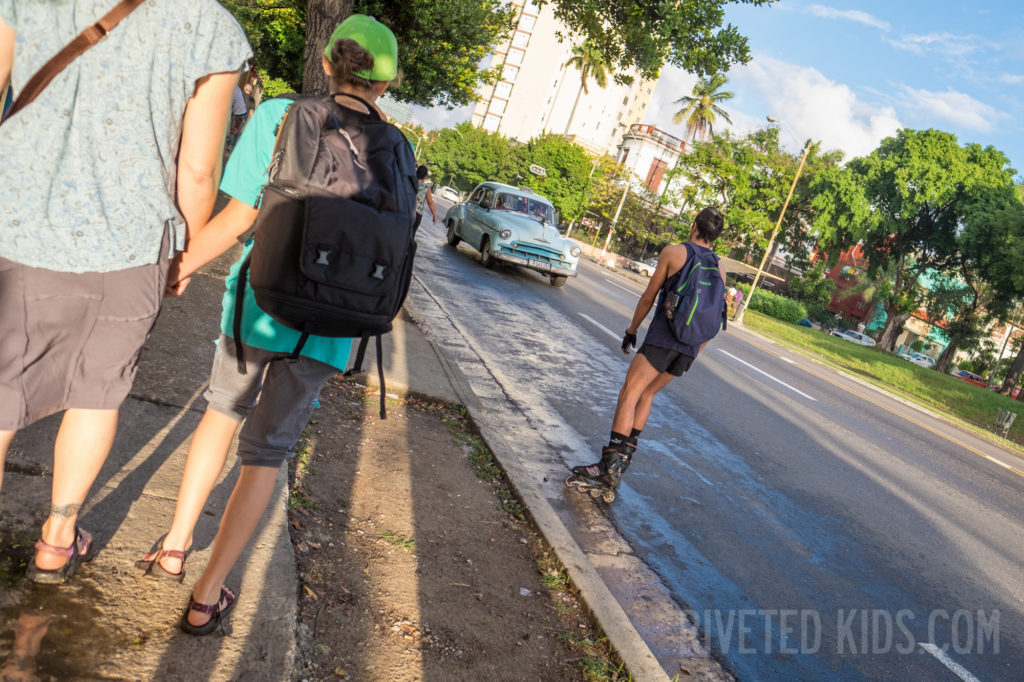
Walking along Calle 23 towards Coppelia.
After strolling along La Avenida de los Presidentes with its one-time pristine mansions, now on Calle 23 we passed movie theaters where long lines of people waiting for film festival showings to begin would soon form.
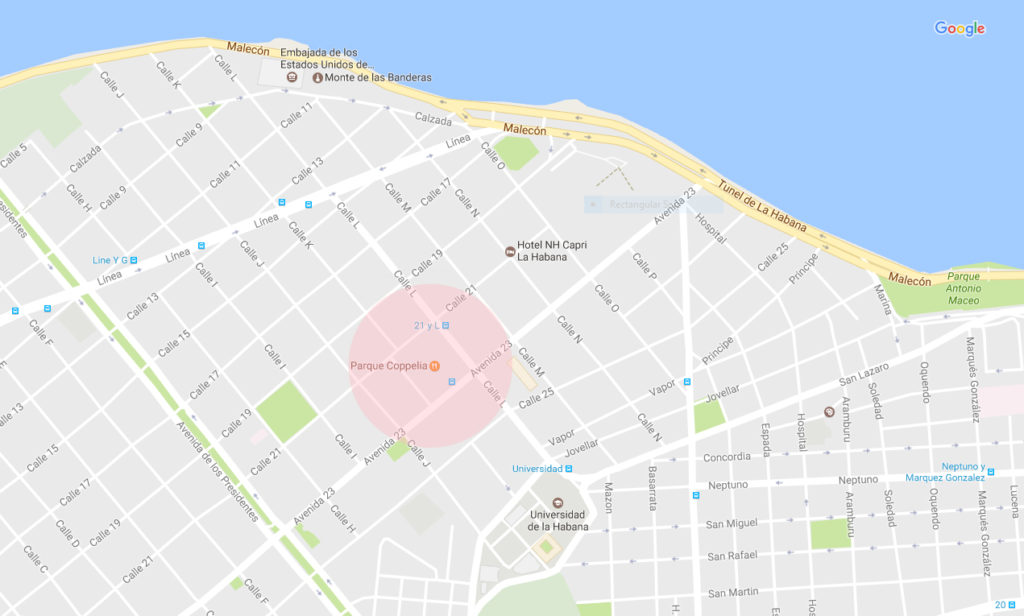
A map of the Vedado neighborhood, near the University, where Coppelia ice cream takes up two full blocks along Avenida 23.

Though not crowded yet, the Riviera and other theaters would soon have long lines of film festival goers.
The moment we got to Coppelia, we knew it from the 1960s architecture. Imagine a white set of buildings, interconnected with stairs and covered walkways, somehow reminiscent of a manta ray. The entrance reminded me of an amusement park – with ice cream images on all sides. We passed a board with myriad ice cream flavors that you would instantly associate with Cuba – guayaba, piña, and even coco (my favorite!). We could hardly wait!
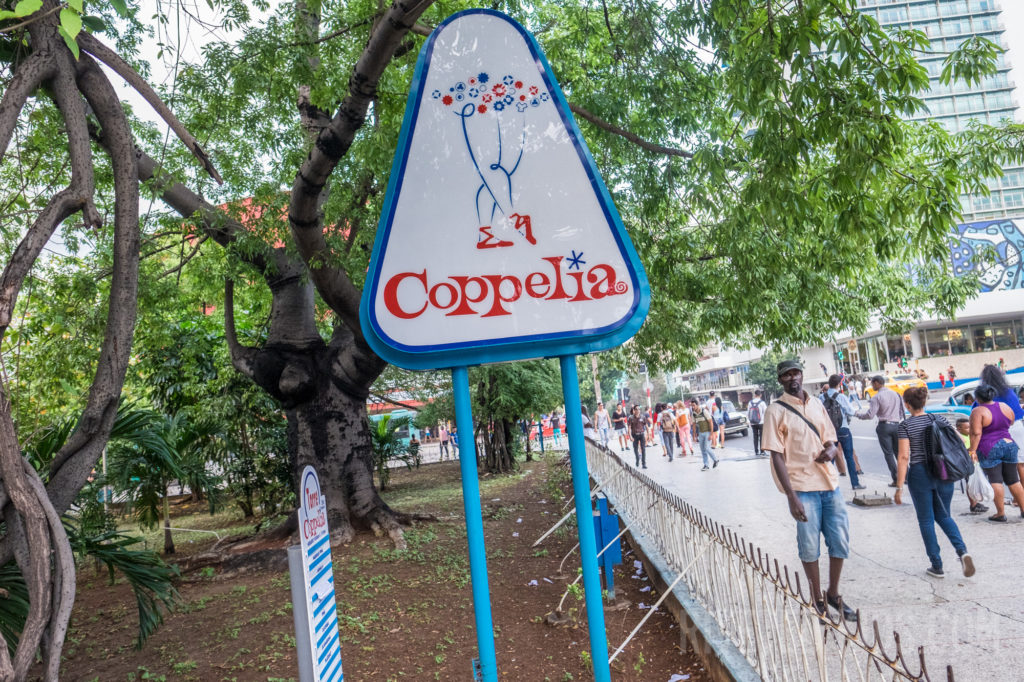
A sign at the entrance to Coppelia, the national ice cream headquarters.
A man greeted us wearing an official looking shirt, and asked if we had CUCs to pay with. “Van a pagar con CUCs?” – yes! As tourists, CUCs were what we had, having exchanged Canadian dollars for CUCs earlier in the day (read more on the monetary system and our approach to it here). He raised a hand, pointing out that we’ll want to go, in that case, to the left and up the stairs. The direction led us away from the ground floor outdoor seating – a lively scene of Cuban kids and families.
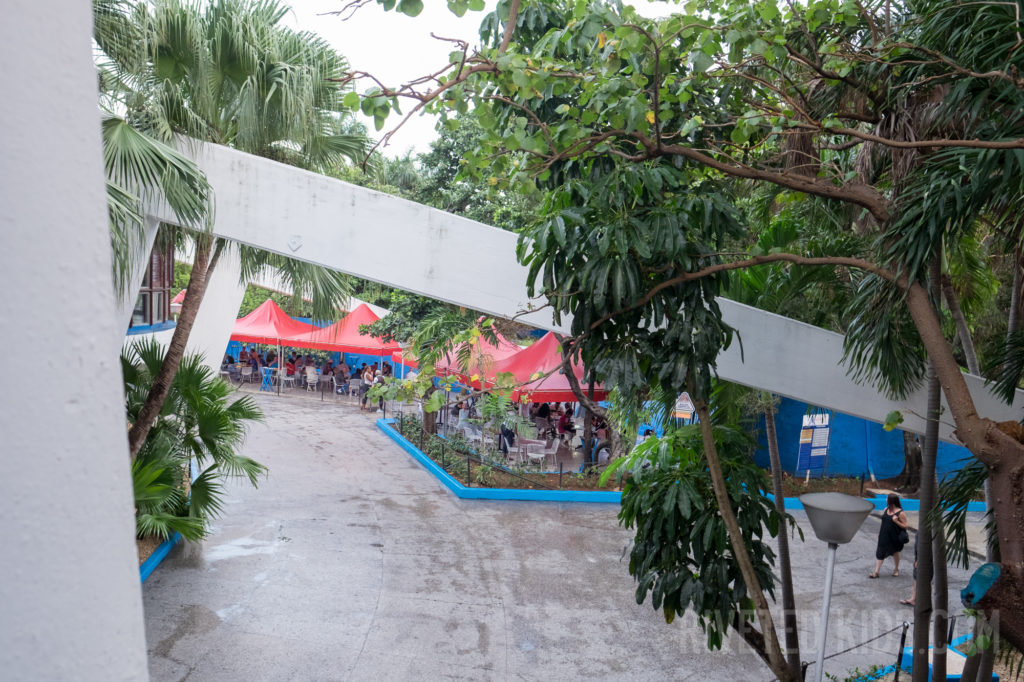
A view of where the locals were seated, eating ice-cream – this is just before we entered our special tourist eating area.
I must admit, I thought we might be getting the special treatment.
A bigger indoor space? More flavors?
Approaching the stairs, three official looking hosts were talking, one woman recognized our not-from-around-here appearance and immediately signaled us to follow her up the stairs.
We opened the door and entered. Two small rooms – no windows. About six tables were crowded in one room. playing silently in a corner, with newspaper articles on the walls related to the building and history. A young Japanese couple huddled around one table.
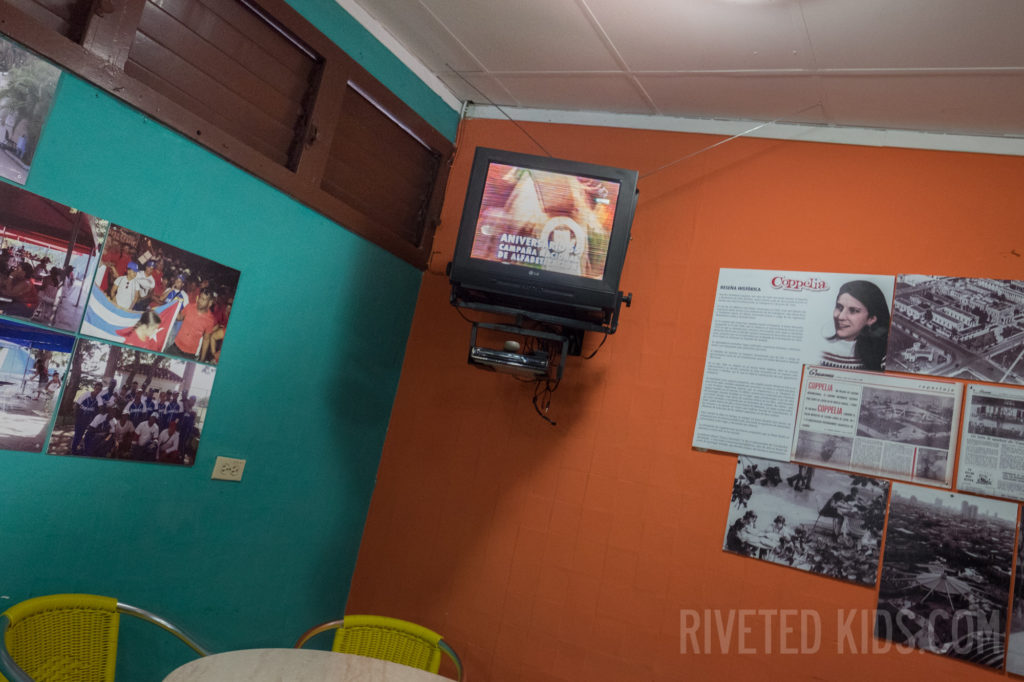
Inside the tourist eating area. Some interesting articles and images on the wall relating to the revolution and you guessed it – ice cream.
When we entered, a handsome Cuban guy in a black and white tuxedo appeared behind a counter bar. We approached and he immediately said in Spanish, “We have vanilla, chocolate, caramel, and orange.” Half joking, but totally serious on the inside, I said “Hay Coco?” (Is there coconut?) I flashed a pretty-please smile. No, he replied. Ugh – I was thinking, But isn’t this the ice cream headquarters? I was dismayed. Okay, chocolate and caramel – two scoops, por favor.
While waiting for our order, I read the articles on the wall. Coppelia was built in 1966, a state-sponsored ice cream shop – a gift to the people from Fidel himself striving to provide more ice-cream flavors than the American brands no longer available after the Revolution. According to Coppelia’s own marketing, Coppelia boasts the highest density of cream of any competitor. The building is a modernist wonder from the sixties. Architected by Mario Girona and named after a famous ballet, the building has won architectural awards. Supposedly the country’s best ice-cream. Today reports are that it serves over 35,000 servings a day. There’s quite a bit of information on its history and its unique modern architecture: https://en.wikipedia.org/wiki/Coppelia_(ice_cream_parlor).
The Japanese couple left and we were each served in parfait glasses what must be the smallest portion of ice cream known to man – but not tourists in Cuba – I’m guessing 2 oz scoops (I know my espresso shot size). And he put some crumble on top. And the taste? It was fine.
Okay. I admit it. I was a little pouty on the inside. Why were we in this isolated chamber? Why can’t hang with everyone else? Why can’t we get the same large portions? And why are there only three available flavors?
We squared up – paying 10 CUCs (think $10 US) for the three of us. More pouting.
When we left, I made sure to walk by the ground floor pavilions. Couples on dates. Families. Kids laughing. And yes, injustice – large portions on plates, a single plate with more ice cream than what the three of us just ordered together.

Locals eating their ice cream outside (please don’t look too closely at their portions).
Looking back now, I can say that we deserved it. As a tourist in many places – Cuba no exception – it’s easy to pay your way to privilege. In Cuba, values of healthcare, housing, and art are evident in that the people are prioritized. Why shouldn’t socialization of ice cream also be a national value? And if that means paying more as a tourist (because we can) and getting smaller portions (more room to sample more food later) – then so be it. It’s a good lesson to learn.
If you get to Coppelia ice cream – see if you can get in line on the ground floor (and let me know if you sample the coco just how good it really is).
Leave a Reply